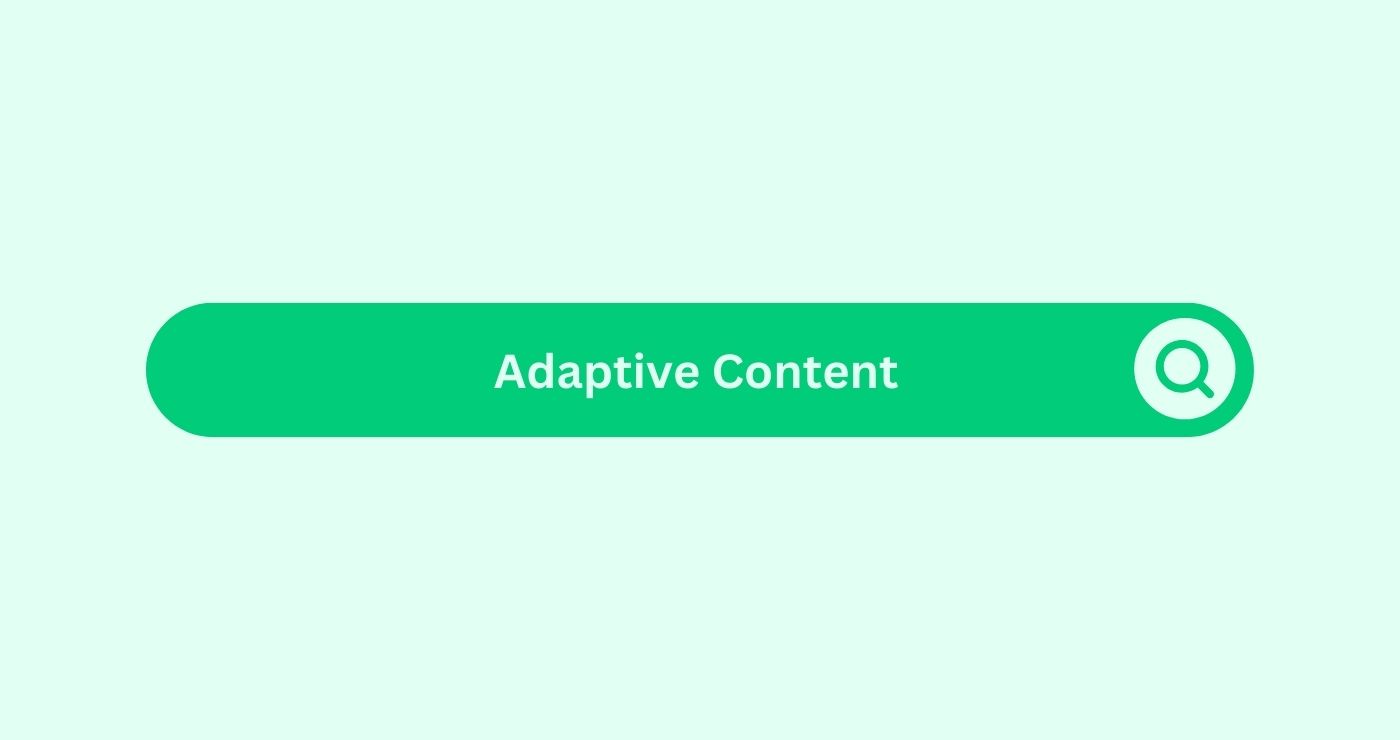Definition
Digital assets, like images, videos, and articles, are key in SEO for driving trafficDefinition In the context of SEO (Search Engine Optimisation... and boosting search rankings. Optimise them with keywordsDefinition Keywords are crucial for SEO success as they conn... and links to enhance visibility and meet marketing goalsIn the SEO space, "Goals" refer to specific, measurable obje.... This can involve altering the content’s format, layout, or even the content itself to maximise relevanceDefinition In SEO, relevance refers to the degree to which a... and engagementDefinition Engagement in content marketing refers to the deg....
How You Can Use
Adaptive content can be effectively used to enhance the user experience and improve SEO performance by delivering personalised and relevant content to your audienceDefinition The term "Audience" refers to the group of indivi....
Example:
Suppose you manage a fitness blog and want to cater to a diverse audienceDefinition The term "Audience" refers to the group of indivi... that includes beginners, intermediates, and advanced fitness enthusiasts. You can use adaptive content to provide tailored workout plans based on the user’s fitness level and device. When a beginner visits your site on a mobile phone, they might see a simple, easy-to-follow workout routine with basic exercises. An intermediate user on a tablet might receive a more detailed plan with video tutorials, while an advanced user on a desktop could access an in-depth, comprehensive training program with downloadable resources and interactive features.
By using adaptive content, you ensure that each user receives the most relevant and engaging content, enhancing their experience and increasing the likelihood of return visits and conversions.
Calculations
To measure the effectiveness of adaptive content, you can track several key metricsWhat are Metrics in the context of SEO? Metrics in SEO refer... that reflect user engagementDefinition Engagement in content marketing refers to the deg... and SEO performance:
- Bounce RateDefinition Bounce Rate in social media marketing refers to t...: Lower bounce rates indicate that users are finding the content relevant and engaging.
- Time on Site: A longer time spent on the site suggests that users are interacting with the content.
- ConversionDefinition In the realm of SEO, Conversion refers to the pro... Rates: Higher conversionDefinition In the realm of SEO, Conversion refers to the pro... rates show that the content is effectively guiding users to take the desired actions.
- Page Views per Session: More page views per session imply that users are exploring more of the website, driven by engaging content.
- Return Visits: A higher number of return visits indicates ongoing user interest and satisfaction with the content.
Key Takeaways
- Enhanced User Experience: Adaptive content delivers a personalized experience tailored to individual user needs and preferences.
- Increased EngagementDefinition Engagement in content marketing refers to the deg...: By providing relevant content, adaptive strategies can significantly boost user engagementDefinition Engagement in content marketing refers to the deg....
- SEO Benefits: Improved user metricsWhat are Metrics in the context of SEO? Metrics in SEO refer... like reduced bounce rates and increased time on site positively impact SEO.
- Versatile Delivery: Adaptive content adjusts to different devices and platforms, ensuring optimal presentation and functionality.
- Data-Driven Insights: Leveraging user data allows for continuous optimization of content delivery strategies.
FAQs
What is Adaptive Content?
Adaptive content is a strategy to deliver personalized, contextually relevant content to users across different devices and platforms.
Why is Adaptive Content important for SEO?
Adaptive content enhances user experience and engagementDefinition Engagement in content marketing refers to the deg..., which positively impacts SEO metricsWhat are Metrics in the context of SEO? Metrics in SEO refer... like bounce rates and time on site.
How does Adaptive Content differ from Responsive Design?
While responsive designDefinition Within the realm of email marketing, responsive d... focuses on adjusting the layout for different screen sizes, adaptive content goes further by altering the content itself based on user context and behavior.
What technologies are used for Adaptive Content?
Technologies include responsive designDefinition Within the realm of email marketing, responsive d... frameworks, content management systems (CMS), user data analyticsDefinition In SEO, analytics involves collecting, measuring,..., and personalization algorithms.
Can Adaptive Content be used for any type of website?
Yes, adaptive content can benefit various types of websites, from e-commerce and blogs to corporate sites and educational platforms.
How do I start implementing Adaptive Content?
Start by analyzing user data to understand their preferences and behaviors, then use a CMS that supports adaptive content delivery and personalization.
What metrics should I track for Adaptive Content?
Track metricsWhat are Metrics in the context of SEO? Metrics in SEO refer... such as bounce rateDefinition Bounce Rate in social media marketing refers to t..., time on site, conversionDefinition In the realm of SEO, Conversion refers to the pro... rates, page views per session, and return visits to measure effectiveness.
Does Adaptive Content affect page load times?
If not optimized properly, adaptive content can impact load times. Use efficient codingDefinition Coding, also known as programming, refers to the ... practices and content delivery networks (CDNs) to mitigate this.
How can Adaptive Content improve user engagement?
By delivering relevant, personalized content that meets user needs, adaptive content keeps users engaged and encourages them to interact more with the site.
Is Adaptive Content suitable for mobile users?
Yes, adaptive content is highly effective for mobile users as it ensures content is optimized for smaller screens and varying mobile contexts.




